
- Home
- Clinical Chemistry Tests
- Prostate Specific Antigen (PSA)
Suitable Specimen Types
SerumProstate Specific Antigen (PSA)
Specimen Volume
2mL bloodSample Preparation
Turnaround Time
24 hoursSample Processing In Laboratory
UsualSample Stability
24 hours at 2-8 ºC
General Information
As a tumour marker for prostatic cancer, PSA demonstrates high tissue specificity and serum concentrations correlate well with tumour mass and clinical stage. However, elevated concentrations can not be considered diagnostic of prostatic cancer, as PSA can be elevated in 15% of patients with benign prostatic hypertrophy.
PSA is an accurate marker of response to treatment and for early detection of recurrent disease. PSA has a serum half life of about 3 days and should fall rapidly to normal or undetectable concentrations after successful radical prostatectomy.
The expression of PSA requires the presence of testosterone or dihydrotestosterone, and therefore, PSA concentrations may be unreliable in patients receiving hormone manipulation therapy.
Patient Preparation
None
Notes
Pathology Harmony have recently issued guidance on appropriate tumour marker requesting. For information please click on the following link:
http://www.pathologyharmony.co.uk/harmony-bookmark-v7.pdf
Reference Range
Reference ranges for PSA for adult males are those obtained by Oesterling (1993) and have been agreed with Consultant Urologists.
The age related ranges are as follows:
|
Age (years) |
Reference Range (ug/L) |
|
≤49 |
<2.8 |
|
50 – 59 |
<3.5 |
|
60 – 69 |
<4.5 |
|
70 – 79 |
<6.5 |
|
≥80 |
Based on clinical suspicion |
Source of Reference Range
Oesterling, J.E., Jacobsen, S. J., Chute, C. G. et al. (1993). Serum prostate-specific antigen in a community-based population of healthy men. Establishment of age-specific reference ranges. JAMA. 270 (7), 860-4.Specifications
-
EQA Status:
NEQAS
- EQAS Scheme: Yes
Creation Date
Monday, 08 August 2011Modification Date
Tuesday, 10 March 2020General Information
Location of Laboratories
Copyright UHB Pathology 2018
Protection of Personal Information – Clinical Laboratory Services comply with the Trust Data Protection Policy and have procedures in place to allow the Directorate and it’s employees to comply with the Data Protection Act 1998 and associated best practice and guidance.
University Hospitals Birmingham medical laboratories at Queen Elizabeth Hospital, Heartlands Hospital, Good Hope Hospital and Solihull Hospital are UKAS (United Kingdom Accreditation Service) accredited to the ISO 15189:2012 standard. For a list of accredited tests and other information please visit the UKAS website using the following link: https://www.ukas.com/find-an-organisation/
- Molecular Pathology is a UKAS accredited medical laboratory No. 8759
- Biochemistry is a UKAS accredited medical laboratory No. 8910
- Haematology and Transfusion is a UKAS accredited medical laboratory No. 8784
- Clinical Microbiology is a UKAS accredited medical laboratory No. 8760
- Cellular Pathology is a UKAS accredited medical laboratory No. 10141
- Musculoskeletal laboratory is a UKAS accredited medical laboratory No. 9897
- Heartlands, Good Hope and Solihull Hospital pathology laboratories are a UKAS accredited medical laboratory No.8217.
Tests not appearing on the UKAS Schedule of Accreditation currently remain outside of our scope of accreditation. However, these tests have been validated to the same high standard as accredited tests and are performed by the same trained and competent staff.
For further test information, please visit the test database: http://qehbpathology.uk/test-database
For further information contact Louise Fallon, Quality Manager, 0121 371 5962
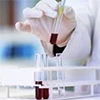 Biochemistry
Biochemistry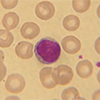 Haematology and Transfusion
Haematology and Transfusion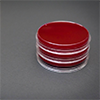 Clinical Microbiology (Including Virology)
Clinical Microbiology (Including Virology)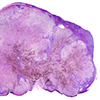 Cellular Pathology
Cellular Pathology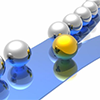 General Information
General Information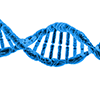 Molecular Pathology
Molecular Pathology